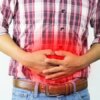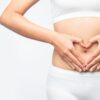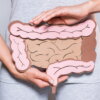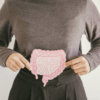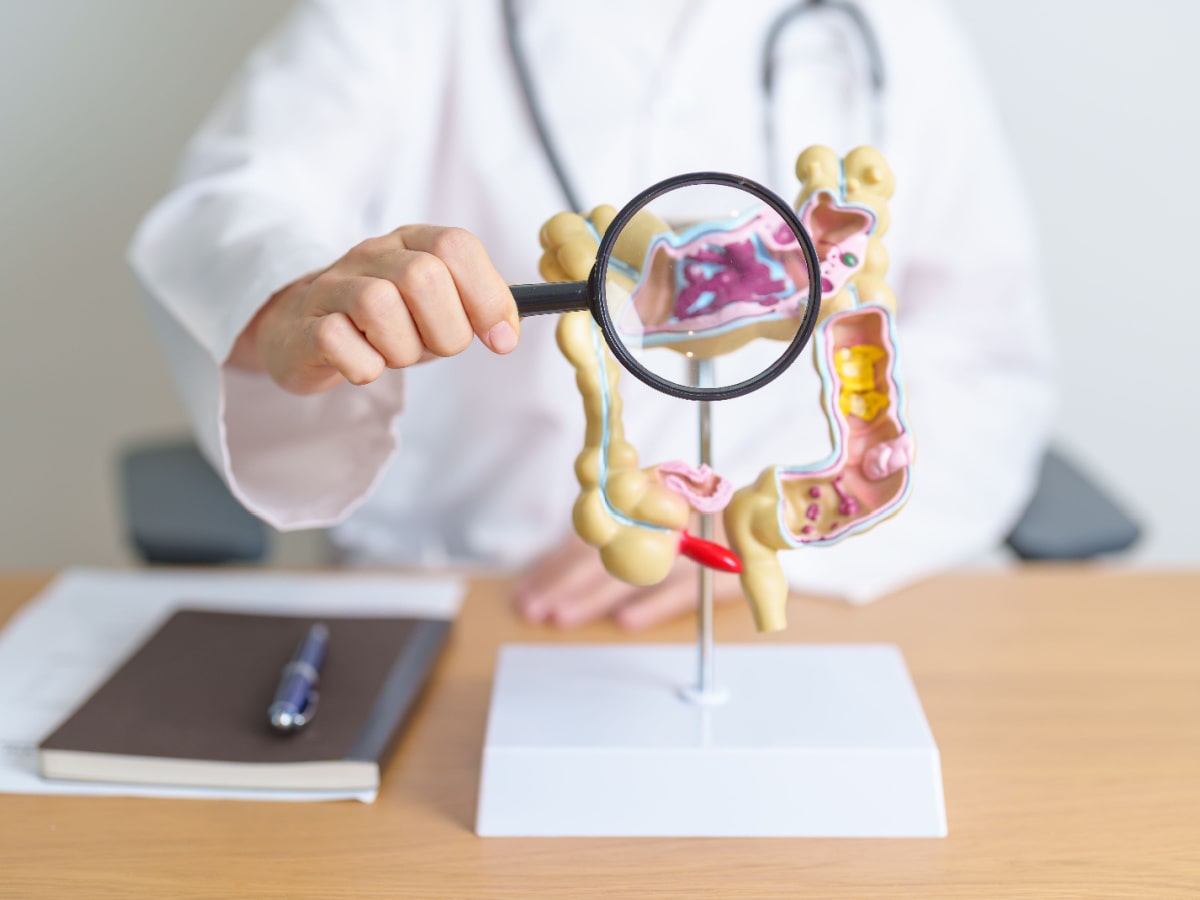
What is diverticulitis?
Diverticulitis is a common digestive condition, the risk of diagnosis of which increases with age.
While diverticulitis indicates inflamed diverticular (the abnormal pockets in the gut lining), it’s possible to have diverticular and not experience symptoms.
The presence of these pockets is typically referred to as diverticulosis. These are some of the most common findings on routine examination via colonoscopy. It’s been reported that half of those over the age of 60 and 60% of those over 80 have diverticular in the lining of the large intestine.
The presence of these pockets does not mean that they will become inflamed and progress to diverticulitis. It’s been reported that only 5-25% of those with diverticular go on to develop diverticulitis. [Source: PubMed]
What are the symptoms of diverticulitis?
Diverticulitis symptoms can vary from patient to patient. However, several common symptoms of diverticulitis can be present in many with this condition.
These symptoms include:
- Pain in the lower left abdomen
- General abdominal pain / discomfort
- Blood in stool
- Diarrhoea
- Fever
- Malaise (a general feeling of being unwell) [Source: PubMed, PubMed]
What causes diverticulitis?
There is not a single cause of diverticulitis. However, there are a range of risk factors that can influence gut health, leading to a progression in disease development in the gut.
It’s also understood that the more risk factors that are present, the increased likelihood of diverticulitis developing.
The most common risk factors are:
- Low fibre diet
- The use of NSAID (non-steroidal anti-inflammatory) medications
- The use of aspirin
- The use of steroids
- The use of opioids
- Smoking
- Sedentary lifestyle [Source: PubMed]
What are the early warning signs of diverticulitis?
Abdominal symptoms can increase gradually before a diagnosis of diverticulitis is given. These can include symptoms that are similar to those typically seen by some with IBS.
These symptoms can include:
- Abdominal pain
- Loose bowel movements
- Bloating
These symptoms can appear suddenly but it’s also possible for these to slowly increase over several days.
It has also been reported that more frequent bowel movements can be a risk factor for developing diverticulitis. This may indicate an issue in the gut which then progresses to diverticulitis. However, the exact mechanisms and reason for this is currently not known. [Source: PubMed]
Fibre and Diverticulitis
A high intake of fibre from the diet has been found to reduce the risk of developing diverticulitis. This has been reported in studies that have indicated that a diet high in fruits and cereal grains is the most protective. [Source: PubMed]
Dietary advice has also suggested the avoidance of nuts, corn and seeds to prevent flare-ups in symptoms. This was originally suggested based on the theory that these would travel through the gut (digestive tract), partly intake and become lodged in the pockets of diverticular, leading to inflammation.
However, this has now been proven to not be the case and up-to-date advice does not suggest that these foods be avoided. In fact, it has been reported that consumption of these foods at least twice a week can reduce the risk of developing diverticulitis. [Source: PubMed]
Does diverticulitis make you tired and weak?
Fatigue is a common symptom in diverticulitis flare-ups. This is likely due to the inflammation that is present within the gut in this disease. [Source: PubMed]
As well as fatigue, diverticulitis and diverticular disease are associated with symptoms of depression and anxiety. While how diverticular disease leads to anxiety and depression is not fully known, it may be due to inflammation and/or alterations in the gut-brain connection. [Source: PubMed]
It has also been found that microbial imbalances in the gut result from inflammation. This may contribute to impaired functioning of the gut lining. This is commonly referred to as increased intestinal permeability or leaky gut. [Source: PubMed]
This can result in inflammatory molecules as well as microbial metabolites entering general circulation. This can result in:
- changes to neurotransmitters
- alterations to the hypothalamic-pituitary-adrenal axis
- alterations to the integrity of the brain barrier. [Source: PubMed]
What is the best way to heal diverticulitis?
Supplements and natural compounds have been assessed in those with diverticular disease.
These have found that a combination of vitamins, anti-inflammatories and prebiotics can help induce remission of this gut condition. These ingredients include:
- Inulin
- Cranberry
- Boswellia
- Zinc
- B vitamins [Source: PubMed]
Further studies have used a combination of herbal compounds with anti-inflammatory benefits. These include trials using a combination of curcumin and Boswellia. [Source: PubMed]
Along with these herbs, the fibre supplement psyllium husk has been studied and found to improve bowel function and reduce gut symptoms such as pain. This is only in part due to the extra fibre as researchers indicate the improvements in symptoms are likely also due to the increased production of short-chain fatty acids which are anti-inflammatory. [Source: PubMed]
Certain diets have been suggested for the treatment of diverticular conditions. While a low FODMAP diet has mostly been studied as an approach to IBS, it may help to manage symptoms of diverticular disease and diverticulitis.
This is due to the diet reducing highly fermentable fibres and the increased gas that can place pressure on the gut lining. [Source: PubMed]
Additionally, fish and the dietary fibre pectin have also been found to reduce inflammation in the areas where it is elevated in diverticulitis. [Source: PubMed]
How long can you go with diverticulitis without knowing?
Many people can have diverticular (the pockets/pouches in the gut wall) and remain symptom-free. These are commonly only identified when patients undergo routine colonoscopy examinations.
However, if these become inflamed then symptoms will increase. If these common symptoms of diverticulitis do appear medical attention may be required. [Source: PubMed]
What does diverticulitis pain feel like?
The most common pain that is experienced in diverticulitis is in the lower left of the abdomen. This is commonly due to the inflammatory response taking place in the sigmoid colon. This is the last section of the colon, before the rectum.
However, it’s also possible for patients to experience pain on the right hand side or in the centre of the abdominal region.
While these symptoms of pain may be more isolated or localised, others with this condition can also experience pain across the abdomen (belly) which may be more of a diffuse pain or discomfort similar to a general ache. [Source: PubMed]
Tests for diverticulitis
The gold standard for testing for diverticulitis is a CT scan. This is an accurate test to assess for acute diverticulitis.
However, many people undergoing routine examinations via colonoscopy with be altered to the presence of diverticula in the colon. The presence of diverticular does not indicate inflammation as these outcomes in the gut wall are present in a significant number of the general population. [Source: PubMed]
While not a test to diagnose diverticulitis, microbiome analysis (gut tests) can help identify certain imbalances (dysbiosis) in the gut microbiome. These imbalances may contribute to a microbiome that is more inflammatory and less anti-inflammatory.
Working to address these imbalances with diet, supplements and lifestyle factors can be a crucial way to prevent future flare-ups. [Source: PubMed]
What are red flag symptoms of diverticulitis?
Several gut symptoms are considered to be red flags. While the presence of these symptoms does not mean something more serious, a medical examination but a doctor or gastroenterologist would be required to rule out possible causes.
These red flag symptoms are:
- sudden and unexplained weight loss
- blood in the stool
- lump or swelling in the abdomen
- shortness of breath
- heart palpitation
- pale skin [Source: NHS]
Treating Diverticulitis
Working to address diverticulitis can involve a short-term approach to reduce inflammation to bring the condition under control.
A second element is to keep the condition in remission. While this will not heal the diverticula (the pockets) natural approaches can be considered to keep the condition in remission to reduce the risk of inflammation developing again.

